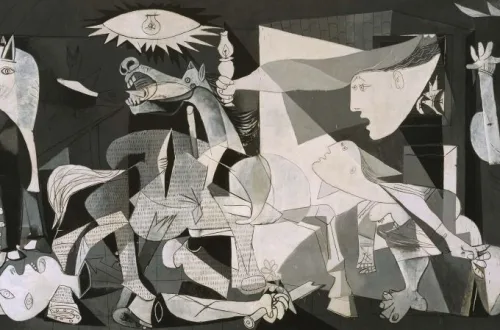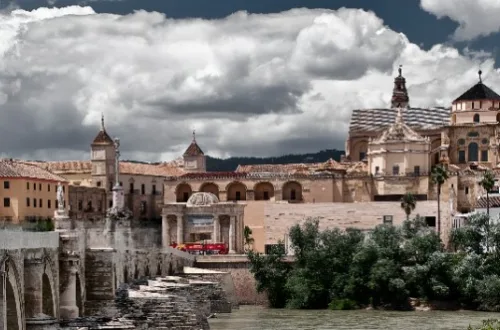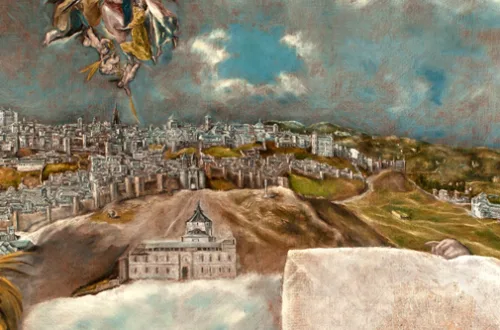
CSA la Tabacalera: an unusual place in the heart of Madrid where modern art, multiculturalism, and new local democratic ideas mingle in an unexpected way
In the heart of Madrid, there is a historic building unlike any other. Within its premises, you will meet diverse people connected by the vision of a better future where multiculturalism, art, and democratic ambitions merge in the most unexpected way.
I’m talking about the Old Tobacco Factory that now houses two modern art entities: Tabacalera, Art Promotion Space (administered by the Spanish Ministry of Education), and the Self-managed Social Center, CSA La Tabacalera, where neighborhood groups carry out long-term cultural initiatives.
It is an unusual place you can enter freely that no person interested in contemporary art or new ideas should miss when visiting Madrid.
- The multicultural context of CSA la Tabacalera in Lavapiés
- CSA la Tabacalera: an opportunity for diversity
- The history of the Tabacalera building and Madrid's collective memory
- How the Self-managed Social Center CSA La Tabacalera started
- A free & democratic cultural center in the heart of Madrid
- The CSA la Tabacalera Space
- The Lavapiés' vibrant context
- CSA la Tabacalera in the neighborhood
- Gentrification: a global problem that also affects Madrid
- A new old management model
- CSA la Tabacalera and the art world
- Bringing art outside the art world
- Self-management as a cultural practice
- Imagining a better, culturally diverse future
The purpose of art is to lay bare the questions that have been concealed by the answers.
James Baldwin
The multicultural context of CSA la Tabacalera in Lavapiés
La Tabacalera belongs to Lavapiés, one of the capital’s oldest districts, and a symbol of Madrid’s traditionalism and manolería.
The sector was abandoned during the Spanish Civil War and re-owned afterward by young people from both the national and international spheres. Currently, 88 different nationalities cohabit in this neighborhood, with immigrants accounting for more than 25% of the residents.
In the 1990s, it became a home for libertarian, anarchist, and squatter organizations. They helped convert the area into a hotspot of multicultural claims and citizen action.

CSA la Tabacalera: an opportunity for diversity
In the self-managed Social Center, CSA La Tabacalera, this dynamic transforms into an opportunity to incorporate art into life and life into art. In a democratic, accessible, and spontaneous manner.
A way to provide links between local needs and global concerns and evaluate diverse alternatives that encourage reflection, integration, debate, and cohabitation in diversity.
As a result, the center established itself as a multicultural hub and artistic hotspot. It is a pioneering initiative (and a model to emulate) on a European scale.
The history of the Tabacalera building and Madrid’s collective memory
Manuel de la Ballina designed the edifice at the end of the 18th century as the Royal Factory of Aguardientes. Completed in 1790, it stopped producing alcohol in 1809 and became a tobacco and rapé industry.
Like most crop factories of the time, this facility predominantly employed women. These cigarette manufacturers (las cigarreras) are crucial to Madrid’s social history, collective memory, and labor rights movement.

The building was abandoned after the privatization of Tabacalera/Altadis in the early 2000s. And so, its management passed to the hands of the Spanish Ministry of Education, Culture, and Sports.
Due to a lack of funds, the initiative stopped and transformed into Tabacalera, an Art Promotion Space operating since 2010. In November 2007, the Ministers Council approved the development of the National Center for Visual Arts, and in June 2009, ceded the project to the architects Nieto and Sobejano.
How the Self-managed Social Center CSA La Tabacalera started
Another section of the building was granted to CSA La Tabacalera, a group of artists and locals who had long sought space for their activities.
In its more than ten years of operation, the center sustained the ideas it started with. That cultural expression and artistic production are human rights, not a monopoly. That financial gain is less vital than freedom of opinion. And that the ability to associate with complete autonomy is essential inside a democratic state.

A free & democratic cultural center in the heart of Madrid
As a result, this association distances itself from traditional cultural management practices to promote “free and open culture, coworking, horizontality, transparency, non-profit or exclusive use, but collaborative, supporting, and responsible handling of resources.”
In this regard, CSA la Tabacalera encourages everyone’s involvement and initiative by fostering a wide range of activities. It houses theater, music, dance, painting, conferences, meetings, audiovisuals, workshops, events, neighborhood interventions, and so on.
This dynamic transformed it into a haven for artistic activities, where creators may avoid the constraints of the art world, where their performance reaches other people and directly influences the community.
The CSA la Tabacalera Space
The building is a large-scale neoclassical industrial architecture encompassing functional and spatial hierarchy standards. It has three stories and a basement, arranged in a regular pattern, supported by semicircular arches and lintel windows.
The floor is organized around three patios, one serving as an inside garden while the other is covered. The unadorned entrances also capture the neoclassical principles in stone.
Despite several renovations and sanitary works since the 19th century, the construction preserves a substantial portion of its original structure and layout.
The floor isn’t flat, the rooms aren’t the same size, and the walls aren’t all the same hue. It is not a white cube but rat an architecture that communicates its history from every corner.
The overall atmosphere is chaotic, atypical, fragmented, and disorganized. It is, nevertheless, vibrant, engaging, imaginative, and inclusive. There is no museographic discourse but rather a mosaic of voices, suggestions, demands, and initiatives as diverse as those participating in the center.
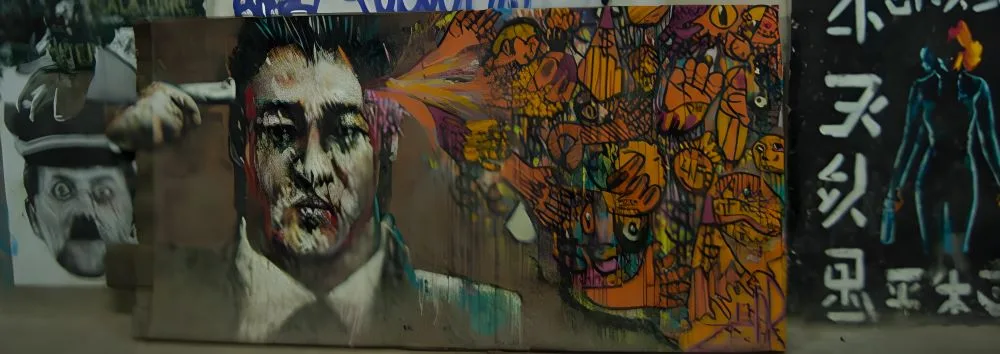
The Lavapiés’ vibrant context
The Lavapiés district is one of Madrid’s most attractive areas. It stars venues dedicated to the performing and cinematographic arts and historical treasures such as the Royal Monastery of Santa Isabel (17th century).
In this regard, the Valle-Inclán Theater, the Circo Price Theater, and the Spanish Film Library are just a few examples. Furthermore, the sector contains major contemporary art institutions such as the Reina Sofia Museum, La Casa Encendida, and la Tabacalera. It also features galleries such as Espacio 8, Swinton & Grant, and Africa Verité.
Additionally, the neighborhood promotes recurring events, including Tapapiés (in October), Lavapiés Diverse (in November), and the Lavapiés Festival of Artistic Interventions (CALLE, in May).
These popular acts reflect the multivocal dynamic inhabiting Lavapiés. They mirror the everyday life of the area, with its ethnic markets and gateways embellished with works of street art.
CSA la Tabacalera in the neighborhood
However, developing mutual understanding, conversation, and coexistence is not always easy.
Therefore, CSA la Tabacalera collaborates with multi-ethnic groups (for example, through musical fusion). It welcomes individuals of all ages and abilities (for instance, with sign language workshops). And also people from all origins and situations, welcoming both specialists and those engaging with artistic creation for the first time.
The center aims to provide space for all the different ways of being and expressing oneself in a diverse context.

Gentrification: a global problem that also affects Madrid
Mingling cultures, citizen aspirations, and creative endeavors have turned Lavapiés into a tourist hotspot and a field of real estate potential. Its market value went up. And so, gentrification became an unwanted consequence confronting the not very wealthy community inhabiting the neighborhood.
This cannibalistic process is consuming precisely what makes the area attractive: its cultural diversity that is slowly being replaced by real estate tycoons.
In big cities like Madrid, gentrification is a recurrent subject. As such, it is frequently debated at CSA La Tabacalera and other similar institutions (for example, La Quimera) as part of an effort to find communal responses to an urgent problem.
A new old management model
As one would expect, CSA la Tabacalera opposes any type of sponsorship. The center believes they endanger the creative freedom and collaboration that should define culture.
It is an endeavor to demonstrate that people, not money, are the primary cultural driver. Their labor, ingenuity, organizational skills, and willingness to share…
Though limited by a lack of financial resources, this space strives to remain as free as the human imagination. Leveraging an inexhaustible resource like the desire for expression makes it a project that is not just viable, but also inspiring.
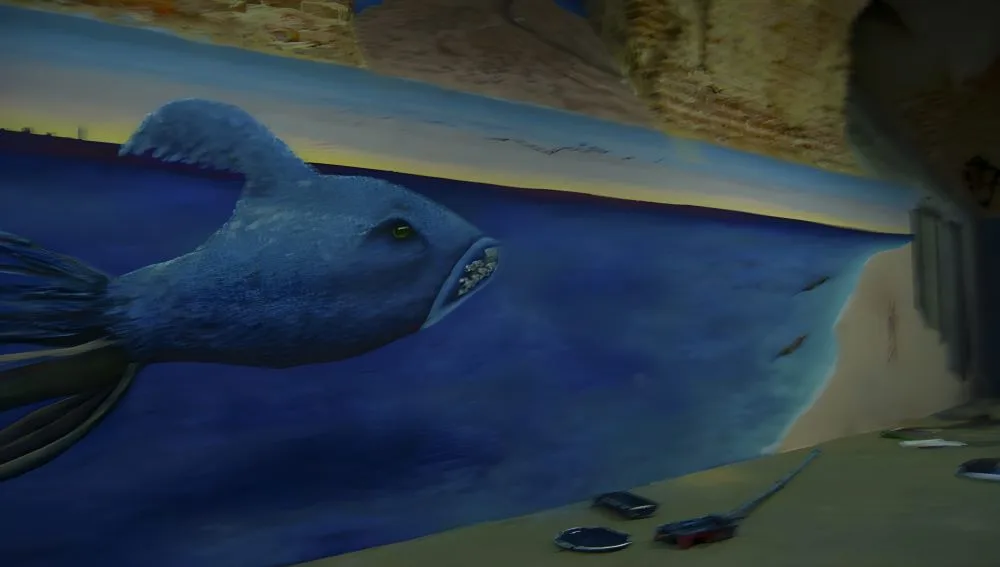
CSA la Tabacalera and the art world
CSA la Tabacalera collaborates with emerging artists, particularly those from UCM’s Faculty of Fine Arts (but not only). Here they find a place to carry out projects and display their artwork.
Although financial transactions are not allowed on the premises, nothing prevents artists from selling their work after the exhibition or collaborating with other entities.
Because of its reputation as a creative hotspot, CSA la Tabacalera has positioned itself in the eyes of art world agents (critics, gallery owners, collectors, museum directors, etc.) who visit it regularly in search of “raw diamonds.”
As a result, this center also serves as a connection point between street art and institutionalized figures.
Bringing art outside the art world
Outside the art world, the center collaborates with associations such as Vecinit@s, Supermanitas, blogs such as Educadamente Libre, and anyone interested in participating.
All decisions (regarding programming, budgets, establishing shifts, and maintenance) are made collectively and openly in assemblies held every 15 days.
For all these reasons, CSA provides a chance to explore a different cultural governance model. One that is far apart from Pablo Helguera’s chessboard and the art world’s vertical and hierarchical logic.
To cultivate an intentional outsider art center that defends the self-management model as a critical tool for empowering people (to create their own culture)—and also making public entities more receptive to the needs of today’s life.
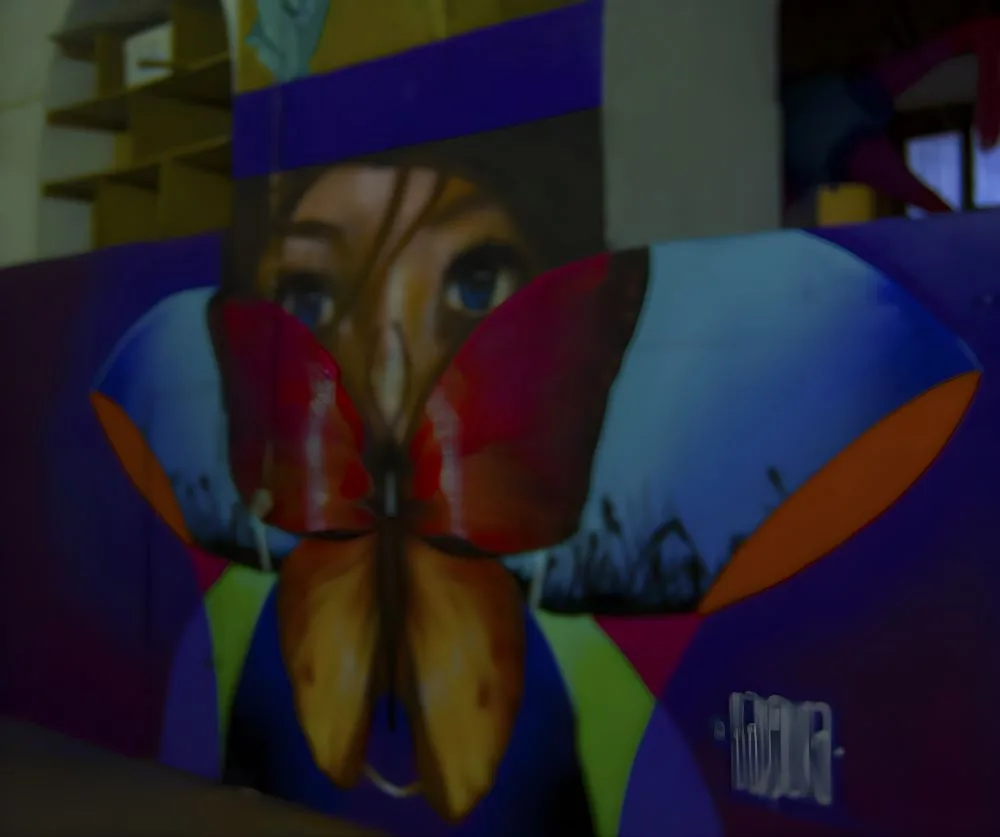
Self-management as a cultural practice
Self-management is a practice as ancient as human societies and a theoretical paradigm traced back to Aristotle’s Politics.
In the modern context, we may discover instances connected to anarchist groups in Europe (in the 1920s), American feminism activities (in the 2000s), and initiatives like Bluestockings in New York and Red Emma’s in Baltimore.
However, after the 2008 financial crisis, this sort of project has become increasingly vital, adding the CSA Tabacalera to the list of over 400 social centers presently operating in Spain.
By relying on people’s goodwill and desire to participate and create, CSA la Tabacalera avoided many art organizations’ challenges (particularly funding).
This is its primary advantage and significant vulnerability, as the center will cease to exist (or turn into something else) as soon as it is no longer helpful for the community that shelters, develops, and manages it.
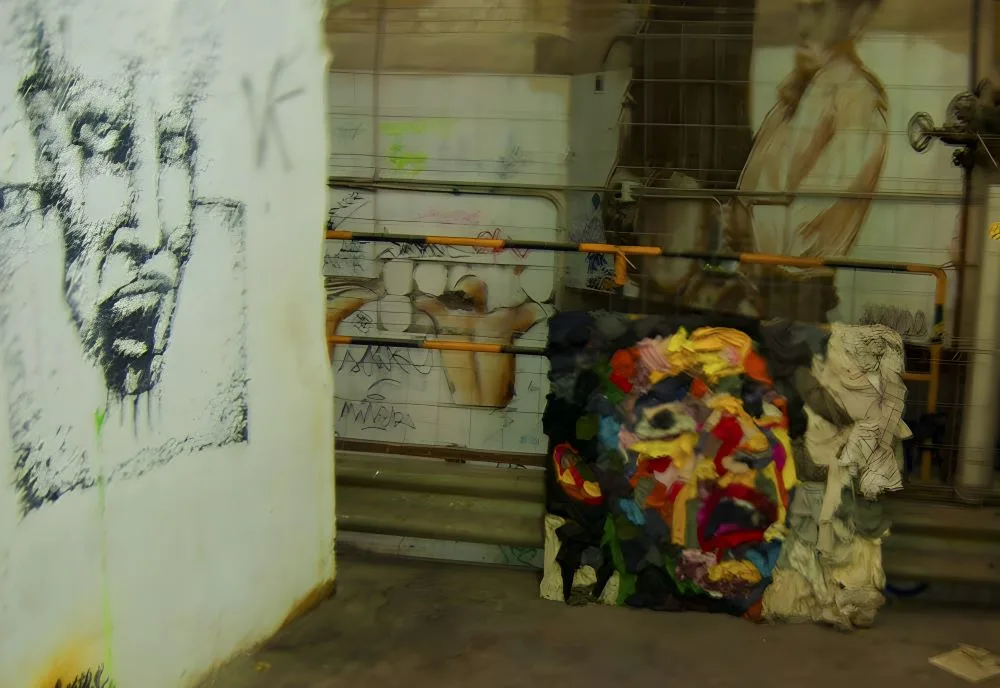
Imagining a better, culturally diverse future
Nonetheless, this practice seems more sensible than traditional institutions’ standard principles. Structures should serve people instead of the other way around. Rather than looking to the past, they should aim to comprehend the present in its complexity and potential. Participating in a global setting as promising, multicultural, and challenging as the one we live in today. Aspiring to create a better future both individually and together.


